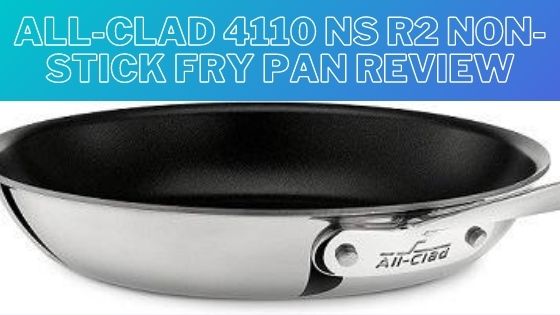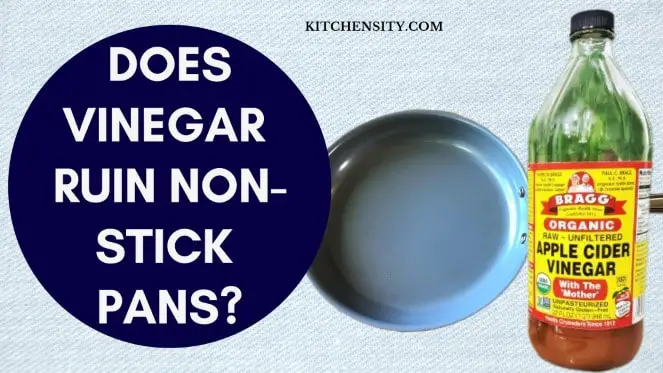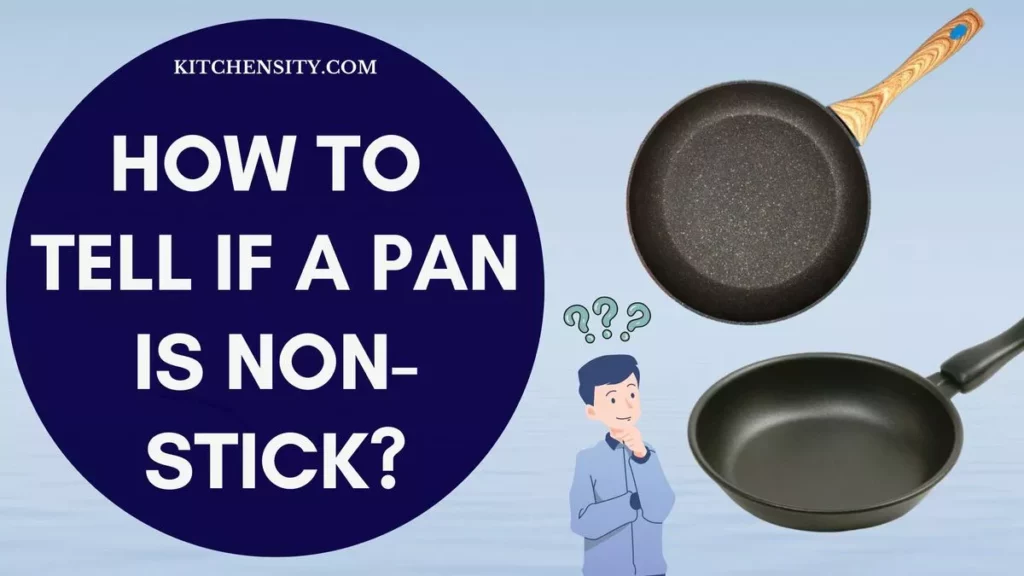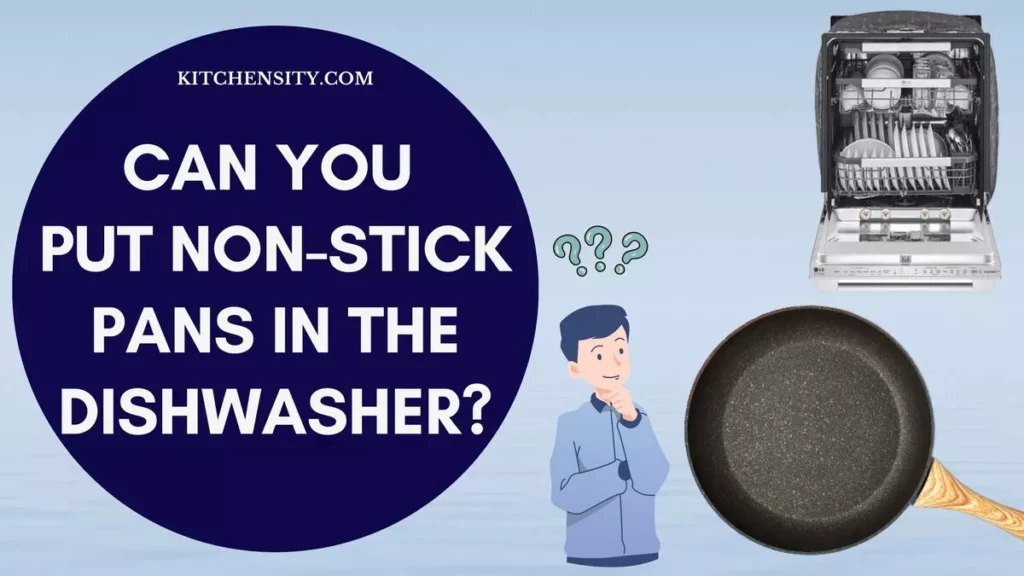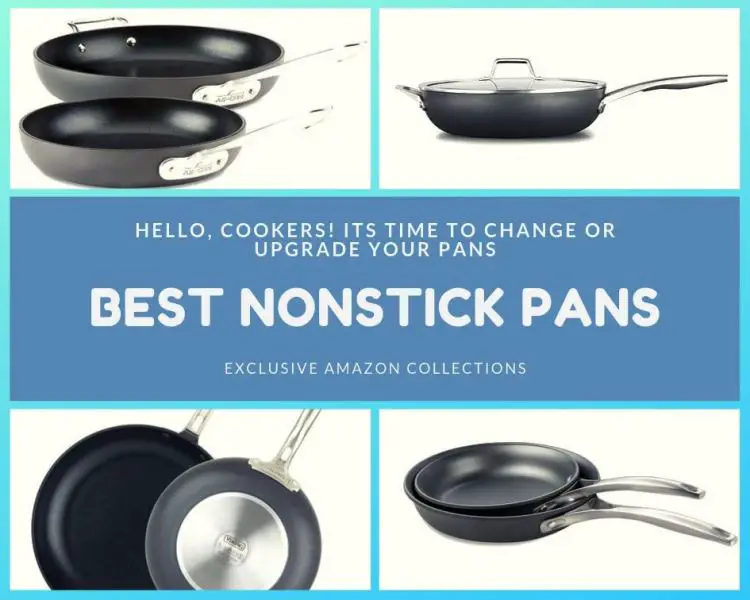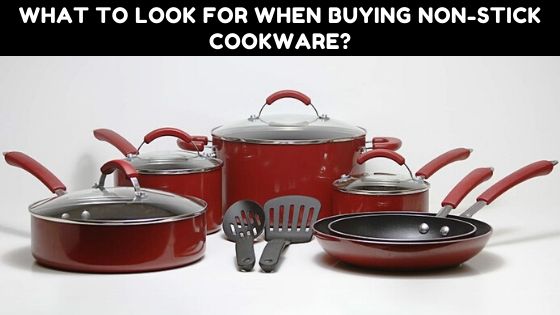Non-stick pans are a great addition to any kitchen, making cooking and cleanup a breeze.
However, over time, non-stick pans can accumulate sticky residue that is tough to remove.
This residue can negatively impact the performance of your pan and affect the taste of your food.
In this article, we will provide you with tips and tricks on how to get sticky residue off non-stick pans and keep them in top condition.
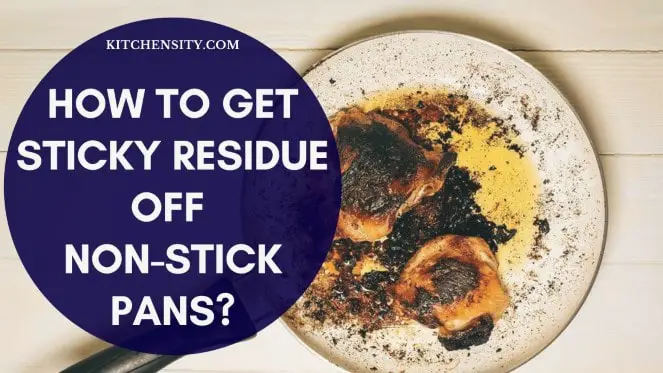
Table of Contents
How To Get Sticky Residue Off Non-Stick Pans?
To remove sticky residue off non-stick pans, try using baking soda and vinegar, dish soap and hot water, or a non-stick pan cleaner. Avoid using abrasive cleaners or metal utensils, as they can scratch the non-stick surface. Prevent sticky residue by avoiding high heat, using the right utensils, and cleaning the pan properly after each use.
Check below for a step-by-step guide.
Understanding Non-Stick Pans
Before we dive into removing sticky residue from the non-stick pans, it’s essential to understand how non-stick pans work.
- Non-stick pans have a layer of coating on their surface, usually made of polytetrafluoroethylene (PTFE) or ceramic.
- This layer makes the surface slippery, preventing food from sticking to the pan.
- The coating is what makes non-stick pans unique, and it requires extra care when cleaning.
Also Read – Does Vinegar Ruin Non-Stick Pans?
Common Causes Of Sticky Residue
Sticky residue on non-stick pans is a common problem that can be caused by several factors.
Here are some of the most common causes of sticky residue on non-stick pans:
- Overheating: Non-stick pans are designed to be used at medium to low heat. If you use high heat, the non-stick coating can break down and release chemicals, which can leave a sticky residue on the pan.
- Using Metal Utensils: Metal utensils can scratch the non-stick surface of the pan, causing it to become damaged and more prone to sticky residue.
- Using Abrasive Cleaners: Abrasive cleaners, such as steel wool or scouring pads, can scratch the non-stick surface of the pan, causing it to become damaged and more prone to sticky residue.
- Not Cleaning The Pan Properly: If you don’t clean your non-stick pan properly after each use, food particles and oils can accumulate on the surface, leading to sticky residue.
- Cooking Certain Types Of Food: Certain types of food, such as sugary or starchy foods, can leave a sticky residue on non-stick pans.
By understanding the common causes of sticky residue on non-stick pans, you can take steps to prevent it from happening in the first place.
Also Read – How To Fix Scratched Non-Stick Pans?
How to Remove Sticky Residue?
Now that you understand the causes of sticky residue, let’s look at some tips and tricks on how to remove it from non-stick pans:
1. Use Baking Soda and Vinegar
- Mix equal parts of baking soda and vinegar to form a paste.
- Apply the paste to the affected area and let it sit for 10-15 minutes.
- Then, use a non-abrasive sponge or cloth to scrub the surface gently.
- Rinse the pan with warm water and dry it with a towel.
2. Use Dish Soap and Hot Water
- Fill your non-stick pan with hot water and add a few drops of dish soap.
- Let the pan soak for 10-15 minutes, then use a non-abrasive sponge or cloth to scrub the surface gently.
- Rinse the pan with warm water and dry it with a towel.
3. Use a Non-Stick Pan Cleaner
- If the baking soda and vinegar or dish soap methods do not work, consider using a non-stick pan cleaner specifically designed for non-stick surfaces.
- Follow the instructions on the cleaner’s label, and be sure to rinse the pan thoroughly with warm water and dry it with a towel.
4. Use a Magic Eraser
- A magic eraser can be an effective tool for removing stubborn sticky residue from non-stick pans.
- Wet the magic eraser and gently scrub the affected area.
- Rinse the pan with warm water and dry it with a towel.
Also Read – How To Remove The Non-Stick Coating From Cookware?
Preventing Sticky Residue
Preventing sticky residue from accumulating on your non-stick pans is easier than removing it. Here are some tips to help you prevent sticky residue from forming:
1. Avoid Overheating
Do not overheat your non-stick pans, as this can cause the coating to break down and become sticky.
This usually happens when the heat is too high, and the pan is left on the burner for an extended period.
The high temperature can cause the non-stick surface to degrade, leading to a sticky residue that is hard to remove.
2. Use The Right Utensils
Using the wrong utensils can also lead to sticky residue on non-stick pans.
Utensils made of metal, such as spatulas and spoons, can scratch the non-stick surface and cause it to become sticky.
This is because the scratches create areas where food can stick and build up over time.
To avoid this problem, always use non-metal utensils, such as silicone or wooden utensils, when cooking with non-stick pans.
These materials are softer and less likely to scratch the surface of the pan, which helps prevent sticky residue from forming.
Also Read – Why Do Metal Handles Of Pans Get Hot?
3. Avoid Abrasive Cleaners
Using abrasive cleaners or scrubbers, such as steel wool or abrasive sponges, can damage the non-stick coating on your pans and cause them to become sticky over time.
Instead, use non-abrasive cleaners and gentle sponges or cloths to clean your non-stick pans.
4. Hand-Wash Your Pans
It’s important to hand-wash your non-stick pans rather than putting them in the dishwasher.
The harsh detergents and high heat of the dishwasher can damage the non-stick coating and cause it to become sticky.
When hand-washing, use warm water, mild dish soap, and a soft sponge or cloth to clean the surface of the pan.
Also Read – What To Look For When Buying Non-Stick Cookware?
5. Store Your Pans Properly
Proper storage of your non-stick pans can also help prevent sticky residue from forming.
- Avoid stacking your pans on top of each other, as this can cause scratches and damage to the non-stick coating.
- Instead, store your pans in a single layer, with a protective layer, such as a towel or paper towel, between each pan. This will help prevent scratches and keep your non-stick pans in good condition.
- Additionally, avoid storing your pans in humid or damp areas, as moisture can also cause damage to the non-stick coating.
By properly storing your non-stick pans, you can help prevent sticky residue from forming and extend the life of your pans.
Also Read – Best Non-Stick Cookware Brands
Conclusion
Sticky residue on non-stick pans can be a frustrating problem, but with the right techniques and preventive measures, you can keep your non-stick pans in top condition.
Remember to avoid overheating, use the right utensils, and avoid abrasive cleaners.
If you do encounter sticky residue, try using baking soda and vinegar, dish soap and hot water, or a non-stick pan cleaner to remove it. Happy Cooking!
YOU MAY ALSO LIKE
- Best Nonstick Pans for Gas Stoves
- Does Enamel Cast Iron Chip?
- How to Season a Nonstick Pan for the First Time?
- How To Season A Ceramic Frying Pan – 1 Hidden Method Revealed
- How To Season Stainless Steel Pots And Pans?
- How To Season And Clean Cast Iron Cookware?
FAQs
-
Is It Safe To Use Baking Soda And Vinegar On Non-Stick Pans?
Yes, it is safe to use baking soda and vinegar on non-stick pans as long as you use a non-abrasive sponge or cloth to scrub the surface gently.
-
Can I Use A Metal Spatula On A Non-Stick Pan?
No, it’s best to use utensils made of silicone, wood, or nylon to avoid scratching the non-stick surface.
-
Can I Put My Non-Stick Pans In The Dishwasher?
It’s best to avoid putting non-stick pans in the dishwasher as the high temperatures and harsh detergents used can damage the non-stick coating.
-
How Often Should I Clean My Non-Stick Pans?
It’s best to clean your non-stick pans after each use to prevent sticky residue from accumulating.
-
Can I Stack My Non-Stick Pans On Top Of Each Other?
It’s best to avoid stacking non-stick pans on top of each other, as this can cause scratches and damage to the non-stick surface.
Katrina Smith is a seasoned expert with over 25 years of experience in all things related to cooking and the kitchen. As an avid cook and kitchen enthusiast, she is passionate about sharing her knowledge and expertise on cookware, kitchen appliances, kitchen tips, and kitchen staples.
Through her articles and reviews, Katrina aims to inspire and help others improve their cooking skills, experiment with different ingredients, and invest in quality cookware and appliances.

